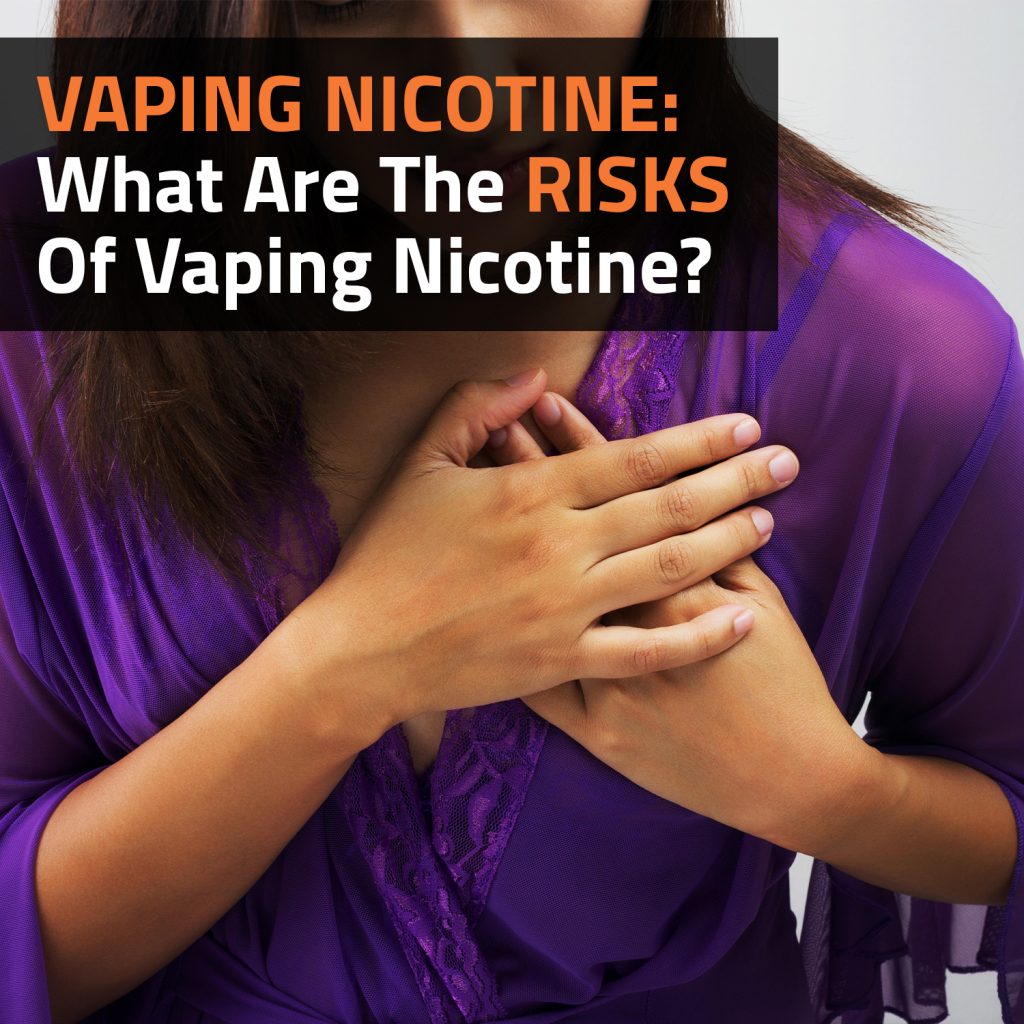In the dynamic landscape of smoking alternatives, vaping has emerged as a prominent contender, particularly among individuals seeking an alternative to traditional tobacco consumption. Central to this phenomenon is the vaping of nicotine, a practice that has generated both intrigue and controversy. As the popularity of nicotine vaping continues to rise, questions about its potential risks and implications have garnered significant attention.
-
Voopoo DRAG H40 Mod Kit
R720.00Original price was: R720.00.R540.00Current price is: R540.00. -
Uwell CALIBURN G3 Lite Pod System
R295.00 -
Geekvape AN2 Kit
R625.00Original price was: R625.00.R525.00Current price is: R525.00. -
Vaporesso ECO NANO Device Cover
R80.00
The Science Behind Vaping Nicotine
To comprehend the risks associated with vaping nicotine, it’s essential to delve into the scientific foundations that underpin this practice. Vaping devices work by heating a liquid solution known as e-liquid. This liquid typically contains nicotine, flavourings, and other additives suspended in a base solution, such as propylene glycol and vegetable glycerin. When heated, the e-liquid transforms into an aerosol that is inhaled by the user.
Nicotine Absorption And Delivery
Nicotine, a highly addictive substance found in tobacco, is a central component of many e-liquids. When inhaled, nicotine rapidly enters the bloodstream through the lung’s delicate membranes. In comparison to traditional cigarettes, vaping is often touted as a less harmful method of nicotine delivery due to the absence of combustion and many of the harmful by-products associated with burning tobacco.
Impact On Brain And Body
Upon entering the bloodstream, nicotine makes its way to the brain, where it interacts with receptors and triggers the release of various neurotransmitters, notably dopamine. Dopamine is associated with feelings of pleasure and reward, which contributes to the reinforcing effects of nicotine and its addictive potential. This neurochemical response plays a crucial role in the development of nicotine dependence.
Nicotine’s Influence On Behaviour
Beyond its physiological effects, nicotine also influences behaviour and cognitive function. Vaping nicotine has been associated with heightened alertness, improved concentration, and stress reduction. However, these cognitive enhancements are counterbalanced by the potential for addiction and withdrawal symptoms when nicotine intake is disrupted.
Respiratory Risks: Exploring The Effects On Lung Health
Amid the evolving landscape of nicotine vaping, concerns regarding its impact on lung health have taken centre stage.
Inflammatory Responses
The inhalation of aerosol particles and vaporised e-liquid components can trigger inflammatory responses within the respiratory system. Prolonged inflammation has the potential to contribute to lung damage and the development of respiratory conditions over time.
Popcorn Lung
Certain flavourings used in e-liquids, particularly those with a buttery or creamy profile, have been associated with a condition known as “popcorn lung” or bronchiolitis obliterans. This condition involves scarring and narrowing of the airways, resulting in breathing difficulties. While most manufacturers have phased out the use of diacetyl, it’s essential to recognise that potential risks associated with flavourings still exist.
Risk To Youth And Developing Lungs
The developing lungs of adolescents and young adults are particularly susceptible to the potential harms of vaping. Nicotine exposure during this critical period of growth may interfere with lung development and function, potentially increasing the risk of respiratory issues later in life.
Challenges In Regulation and Research
Vaping nicotine is a relatively recent phenomenon, and thorough research on its long-term respiratory effects is ongoing. The rapidly evolving nature of e-cigarette technology, as well as the diverse range of e-liquid ingredients and devices available, presents challenges in conducting comprehensive studies.
Cardiovascular Consequences: Nicotine’s Impact On Heart Health
Beyond its effects on the respiratory system, the impact of nicotine vaping on cardiovascular health is a critical aspect that demands careful consideration.
Blood Pressure And Heart Rate
Nicotine is a potent vasoconstrictor, meaning it causes blood vessels to narrow and constrict. This leads to a rise in blood pressure and an increased heart rate. Individuals with pre-existing hypertension or cardiovascular conditions may face heightened risks due to these effects.
Impact On Blood Vessels
The constriction of blood vessels caused by nicotine can strain the cardiovascular system. Over time, chronic exposure to nicotine may contribute to the development of atherosclerosis, a condition characterised by the build-up of plaque within the arteries. Atherosclerosis can lead to reduced blood flow, increased risk of blood clots, and potentially result in serious cardiovascular events like heart attacks and strokes.
Endothelial Dysfunction
Nicotine exposure can also impair the function of the endothelium, the inner lining of blood vessels. Endothelial dysfunction contributes to reduced blood vessel flexibility and diminished ability to dilate or expand in response to changes in blood flow. This dysfunction is a precursor to cardiovascular diseases and compromises overall heart health.
Youth And Cardiovascular Vulnerability
The cardiovascular risks associated with nicotine vaping are particularly concerning among adolescents and young adults. Young individuals experimenting with nicotine are at risk of developing a lifelong addiction and may inadvertently expose themselves to cardiovascular stress during a critical period of cardiovascular development.
Dual Use Dilemma: Vaping As A Smoking Cessation Aid
Dual use refers to the simultaneous use of both traditional tobacco products and vaping devices. In this context, individuals who attempt to quit smoking by adopting vaping may find themselves engaging in both activities, potentially diminishing the intended harm reduction benefits of vaping. If individuals do not fully transition away from smoking, they remain exposed to the risks associated with combustible tobacco, negating the benefits of vaping.
Benefits Of Vaping For Smoking Cessation
Vaping eliminates the combustion process found in traditional cigarettes, which results in the release of harmful by-products such as tar and carbon monoxide. As a result, switching to vaping reduces exposure to these harmful compounds.
Nicotine Dependence And Behaviour
The addictive nature of nicotine compounds the challenges of dual use. Nicotine’s grip on users may make it difficult to fully abandon smoking, even when transitioning to vaping. The dual use scenario sustains nicotine dependence and its associated health risks, limiting the effectiveness of vaping as a smoking cessation aid.
In the ever-evolving landscape of nicotine consumption, the act of vaping has emerged as a significant contender, reshaping how individuals approach smoking alternatives. This exploration into the risks of vaping nicotine has unveiled a multifaceted terrain that demands thorough understanding and informed decision-making.
Ultimately, the complexities of vaping nicotine risks demand a balanced assessment of benefits and potential harms. The journey toward a healthier approach to nicotine consumption requires awareness, mindfulness, and a commitment to long-term well-being. In the midst of shifting trends and evolving technologies, individuals stand at the helm of their own choices, poised to navigate the intricate landscape of vaping nicotine with wisdom and care.










